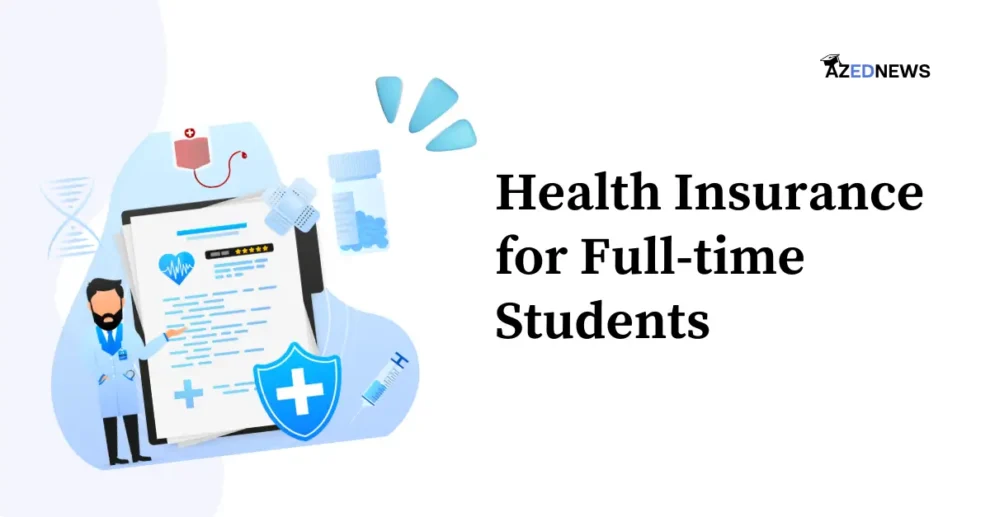Are you looking for Health Insurance for Full-time Students? then you are on the right article. More than 18 million people are pursuing higher education in the United States. Most of the colleges and universities require students to have health insurance. Both full-time and part-time students enrolled in graduate, undergraduate, or technical schools may be subject to this requirement.
Table of Contents
Students can often obtain health insurance through campus health plans offered by universities and colleges. Generally, tuition invoices include the cost of this health insurance unless a student obtains and reports another comprehensive coverage.
If students choose to buy health insurance, they should keep in mind that there may be extra charges for care at student health clinics. Additionally, bear in mind that college students can obtain health insurance in a variety of methods.
Key Takeaways:
- Every student enrolled in full-time courses in the USA has to apply for health insurance to cover their medical costs.
- Students who are under 26 can apply for health insurance with a dependent which could be a parent or a caregiver.
- Various universities in the United States offer health insurance to students along with tuition fees.
- Students can get student health insurance via parent’s health insurance plan, university-sponsored insurance, and more.
- Group insurance allows a group of students to apply for a student visa.
Health insurance for full-time students who are dependents:
You can probably continue to be covered by your parent’s health insurance plan until the age of 26 if you are a young adult who is regarded as a dependent. This holds whether your parent purchases insurance through the Affordable Care Act (ACA) marketplace or their place of employment.
If you reside in the same state as your parent and attend school, it might work best. If you live in a different state, you should find out if you can get care where you live and attend school by looking through the plan’s provider network.
A parent’s plan will typically cost less to add a dependant under the age of 26 than it would to purchase a separate plan. In many areas, you can stay on your parent’s insurance until you turn 30 or 31 if you meet certain requirements in addition to being a college student.
What is institute-based health insurance for full-time students?
As previously said, most of the time, students can get health insurance from their institution or university. This kind of coverage is frequently referred to as “student health plans” or “campus health insurance.”
The New York Times reports that the annual cost of on-campus health insurance can range from $2,000 to $4,000. This cost is often covered by the student’s tuition.
Estimates from the Centers for Medicare & Medicaid Services (CMS) indicate that up to 3 million Americans are covered by student health plans. While some of these plans have extensive coverage, others have hefty deductibles and only give restricted benefits.
What are the different health insurance options for full-time students?
College is a time for many Americans to go out on their own and embrace new challenges as newly independent adults. Obtaining reasonably best health insurance for students is one of the main obstacles that many students encounter. Health insurance safeguards you in the event of illness or accident, even if you are young and in good health.
1. Parent’s health insurance plan:
Even though you might no longer live with your parents, going to college doesn’t need complete independence. You are permitted to remain on your parent’s health insurance plan until you turn 26 if you have been covered by it up to now under the Affordable Care Act (ACA).
This implies that you might be covered by their health plan for the duration of your time in college. This allows you to devote more time and effort to your study. You will likely have graduated or secured employment with health insurance by the time you reach 26.
2. University-sponsored insurance:
You might be able to locate an inexpensive plan via your university if you are unable to rely on your parents for health insurance. Many colleges offer student health plans to help with medical costs since they mandate insurance for their students.
Most student health plans are governed by the ACA. This implies that there will be no annual or lifetime benefit caps on the ten essential health benefits, which include prescription medication, emergency treatment, hospitalization, and more.
3. Income-based plans:
An income-based plan is the next choice for college students seeking health insurance. Only those Americans who meet specific non-financial requirements, the federal poverty threshold, and their yearly household income qualify for these programs.
You could not be eligible if your parents continue to list you as a dependent on their tax return, which is based on their annual family income.
Should you meet certain requirements and be 30 years of age or older, you can be eligible for a catastrophic health plan. Plans classified as catastrophic have high deductibles but reasonable premiums.
They rank among the least expensive choices for kids with minor health issues. If you match the coverage conditions, it can cover you in the event of a medical emergency.
4. Health insurance plans on public or private exchange:
For students, purchasing health insurance through a public exchange can also be a great choice. State-based exchanges and the federal Health Insurance Marketplace are examples of public exchanges.
Public exchanges offer a range of ACA-compliant qualified health plans categorized into metallic categories, such as bronze, silver, gold, and platinum. Catastrophic plans can also be bought on a private or public exchange.
This provides you with a lot of options to choose from when trying to select a coverage level that strikes a balance between an affordable premium and a low enough deductible to suit your needs.
5. Employer-sponsored health insurance:
A lot of college students work while they are enrolled. Although many small businesses are not required by the federal government to provide health insurance, many do so since it’s a fantastic way to draw in and keep staff.
As a student, you may be eligible for some employer-sponsored health benefits, depending on your business.
What does health insurance for college students cost?
The following illustrates the cost of health insurance for college students:
- A Forbes Advisor survey of student health insurance policies at ten institutions found that the average cost of a plan is approximately $2,915 for the 2022–2023 academic year.
- A 21-year-old’s average yearly cost for an ACA Bronze plan in 2022 was $3,756, as reported by the U.S. Department of Health and Human Services.
- According to the Kaiser Family Foundation, the average annual cost of employer-sponsored insurance in 2021 was $5,969 per year.
College students’ health insurance premiums vary based on several variables, including their age, residence, plan type, and eligibility for subsidies.
Obtaining insurance through the school may be the most cost-effective choice if a student is unable to continue on their parent’s plan.
What are group health insurance plans?
You may be able to take part in an employer-sponsored health plan or a group health insurance plan if your workplace offers a variety of health insurance options as part of its benefits package.
An employer may provide its staff with health insurance under the terms of an employer-sponsored plan. To remain covered, participating employees pay a monthly premium, which is often deducted from their paychecks before taxes.
Enrollment in a plan can be done in two ways: either during the yearly open enrollment period or, in the event of a qualifying life event, during a special enrollment period.
A company may provide a variety of plan types, with different provider networks and policy terms such as coinsurance and deductible levels for each. However, since most Americans are covered by group health insurance, students will probably be familiar with how it operates when they begin working.
It’s also a simple method of obtaining health insurance without having to look for a policy elsewhere on your own.
What are health stipends?
Your employer can give you even more coverage by adding a health stipend to your HRA or standard group health plan, whichever they offer. By taking part in a health stipend, you can spend the additional money that is normally included in your paycheck on goods and medical services.
Stipends are subject to less regulation and are taxable, in contrast to HRAs. Therefore, your employer cannot demand that you use your stipend to pay for medical expenses or ask for documentation proving that you have health insurance coverage.
Stipends, however, remain a great choice for students who require additional financial assistance to cover their medical expenses or who wish to have a flexible health benefit.
Frequently Asked Questions:
1. What type of insurance can students take?
If you are the primary provider for your family, having life or term insurance for students can provide you the assurance that they will be financially stable in your absence and won’t have to worry about covering monthly costs.
2. What types of insurance are the most relevant to college students?
Health, renters’, and auto insurance are common personal insurance plans for college students, but there are other factors to take into account when choosing a policy.
3. Can a student apply for health insurance?
Based on their needs and the insurance provider’s coverage, students can choose a plan. Plans for group health insurance for students provide coverage for several students under one policy. Educational institutions frequently provide these plans to their students.
4. How many types of health insurance are there in the USA?
In the US, there are two different kinds of health insurance: public and private. The majority of people combine the two. Children’s Health Insurance Program, Medicaid, and Medicare are the three public health insurance programs in the US.
5. What type of health insurance can students take?
If you are the primary provider for your family, having life or term insurance for students can provide you the assurance that they will be financially stable in your absence and won’t have to worry about covering monthly costs.
Conclusion:
It can seem difficult at first to look for and enroll in health insurance, just like with anything new. However, once you are aware of your possibilities, getting inexpensive health insurance will be a task you can complete, freeing you up to concentrate on your studies.
Students at colleges and universities are frequently obliged to carry health insurance, although there are other choices available. Colleges and universities usually provide reasonably priced health insurance for their students. Additionally, students under 26 can be eligible for coverage through their parent’s health plan.












Add Comment